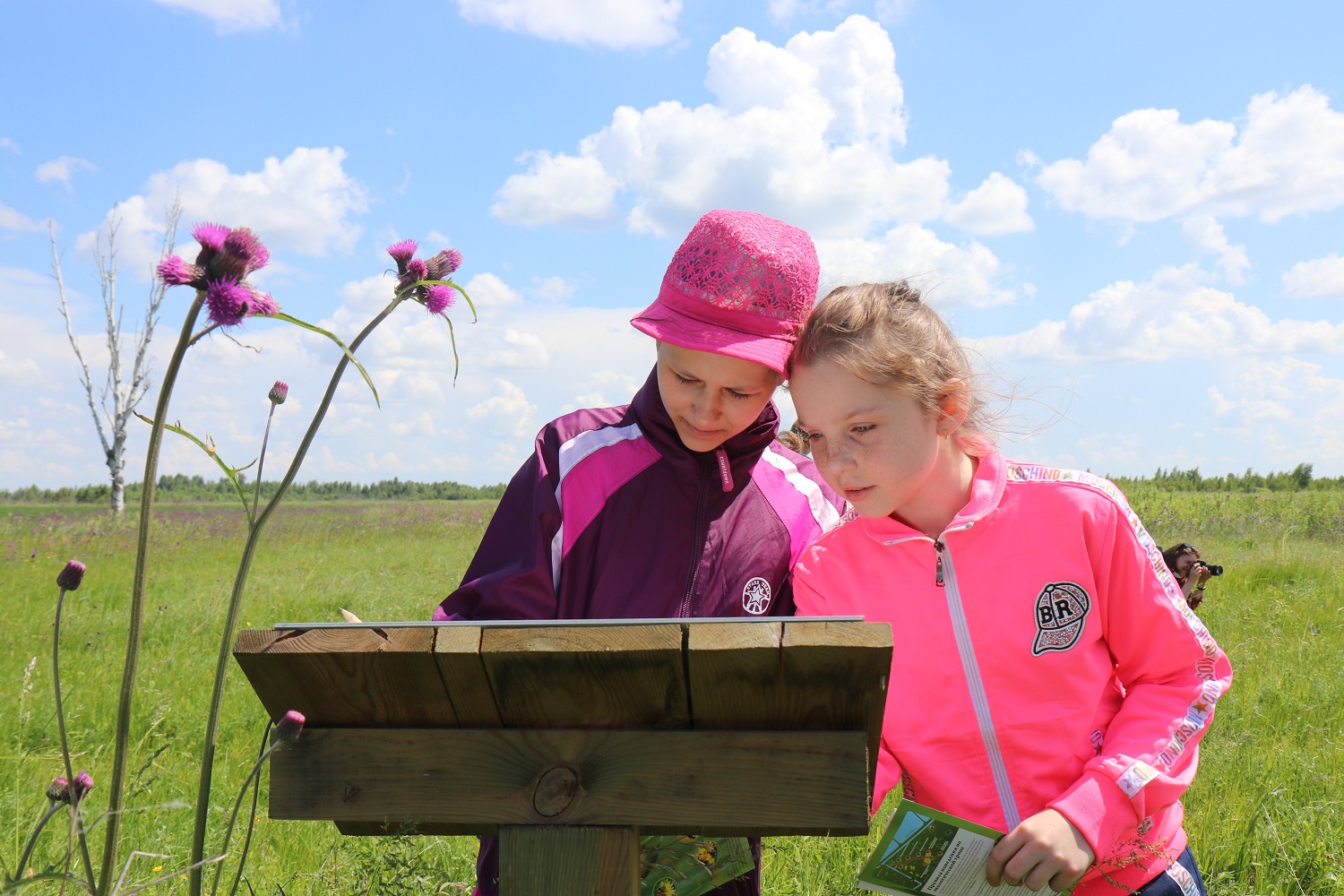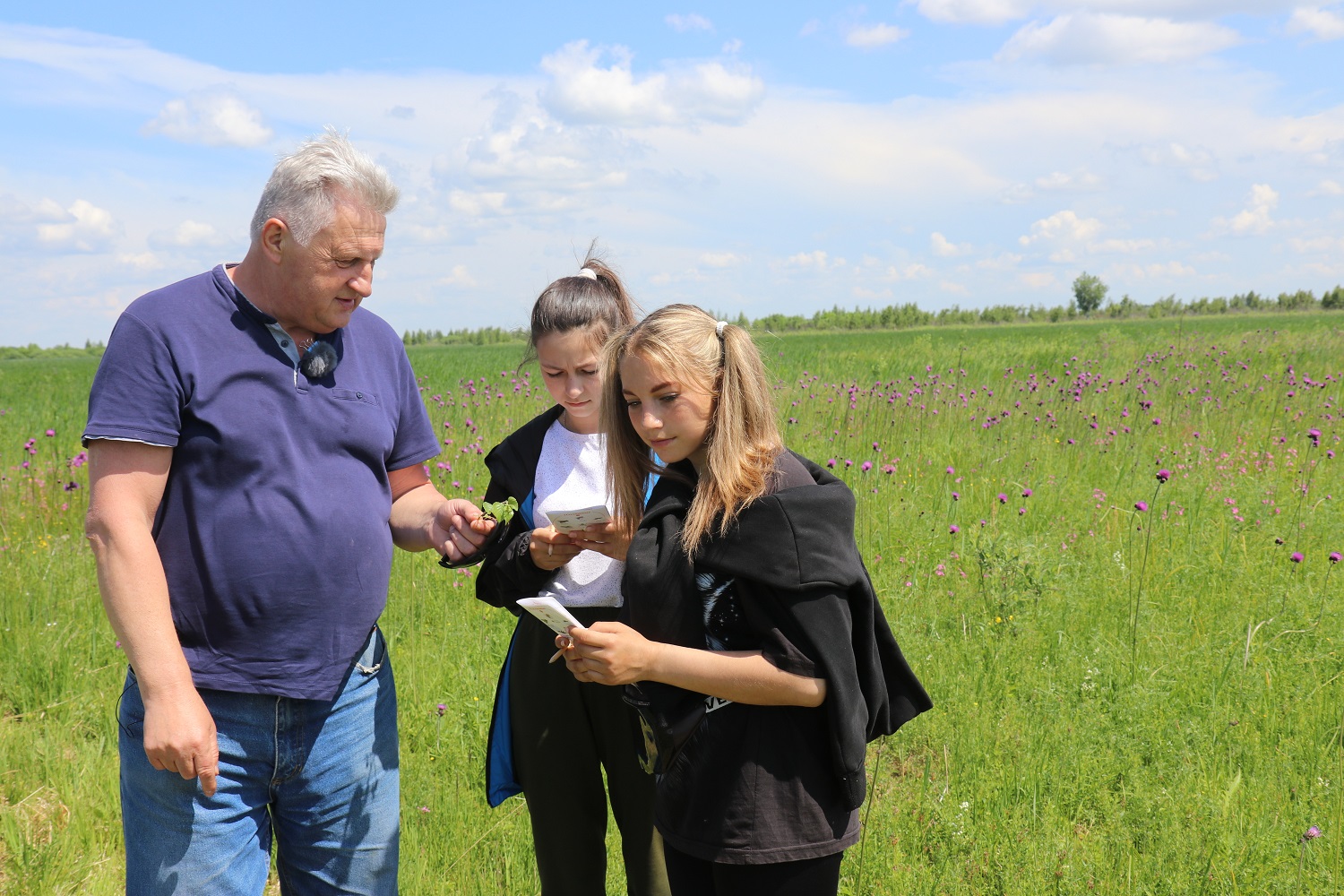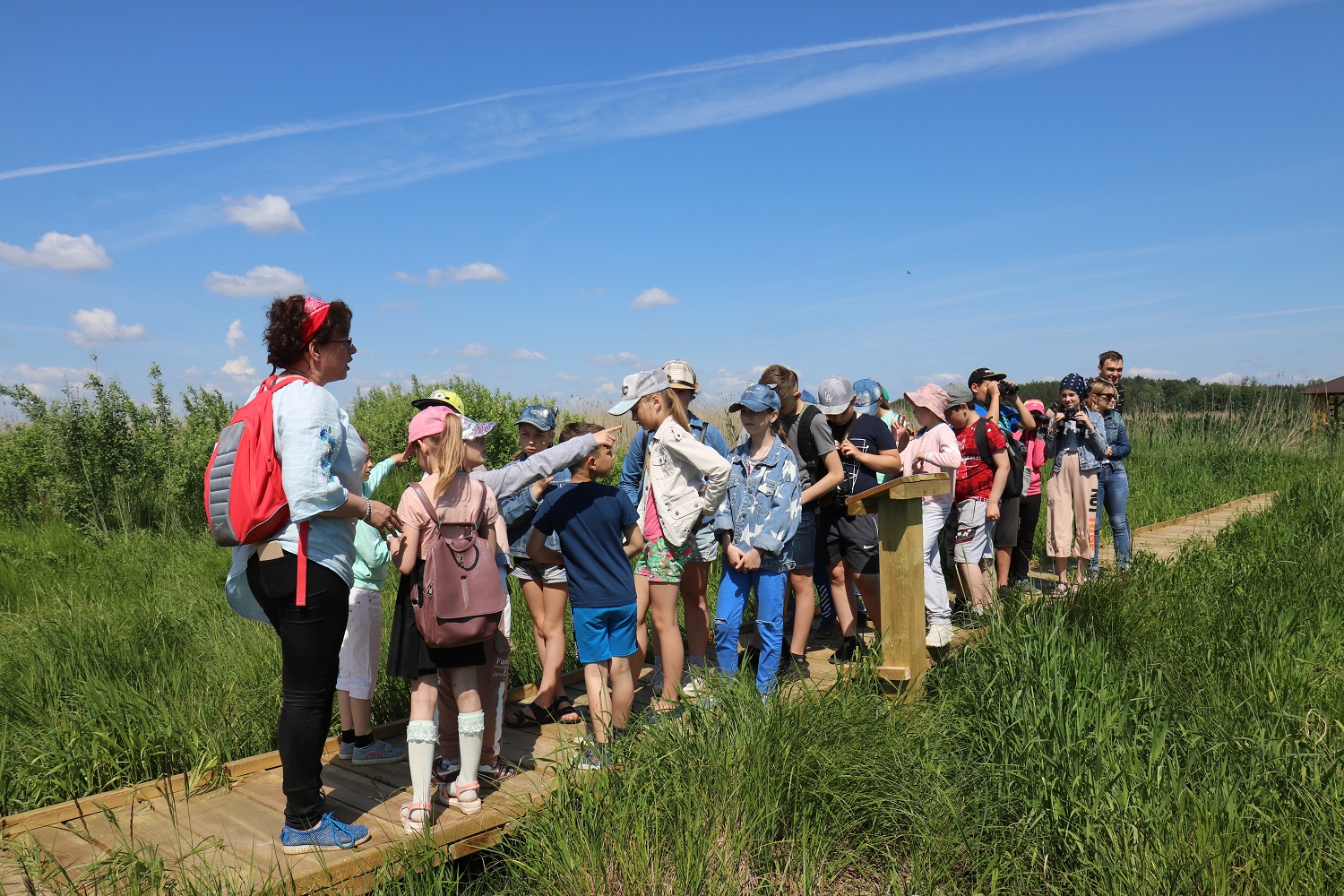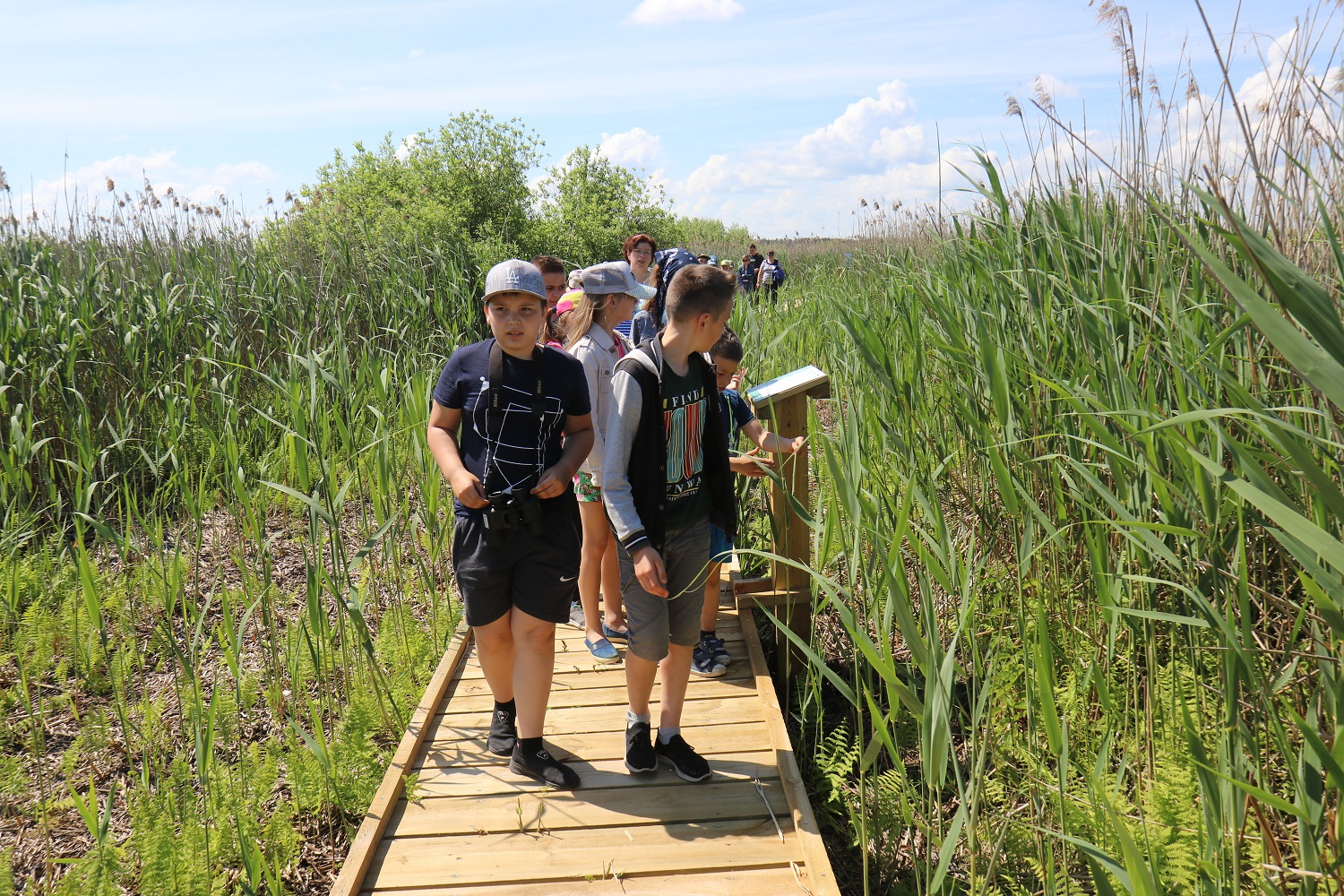With support from the UNDP Wetlands and Ecomonitoring projects and the EU-funded LIFE programme, schoolchildren were taken on an exciting journey across the Zvanets fen mire with real scientists as their teachers. Photography: UNDP in Belarus
“When we were told we were going to the mire, I imagined some place with dirty green water overgrown by reeds,” says Daria, 10 years old, who was among the first to visit a new ecological path across the Zvanets fen mire in the south of Belarus, along with her schoolmates and teachers.
Instead, the kids were greeted by warm sun, blue skies, a light breeze and a sea of greenery, as if the mire was opening the doors of a “green class” for its young visitors.
The construction of a new ecological path across the Zvanets fen mire in the south of Belarus grants visitors new opportunities to explore unique ecosystems.
The path leads almost one kilometer deep into the very heart of one of the most treasured nature territories in Belarus – also home to the globally threatened aquatic warbler.
This tiny and shy bird began to disappear in ecosystems under threat, and is a vivid indicator of the fen mire’s health.
“In school we learn about wild plants only from books. It is much more interesting to study them in nature. We even heard an aquatic warbler singing today!” said Anna, 12 years old.
While walking along the path, the children were hoping to meet with the legendary aquatic warbler – the rarest inhabitant of the European fen mires.
The new ecotourism infrastructure has been designed and constructed by the EU’s LIFE Programme and UNDP-Ministry of Environment “Wetlands” project with the financial support from the Global Environment Facility (GEF).
With the new eco path, the Zvanets fen mire significantly increased its chances to become a new bright tourist attraction and be the driving force for nature tourism development in the south of Belarus. Even more than that.
Brining young people closer to the environment gives them an excellent opportunity to get a comprehensive picture of the nature in an exciting and creative format. The outdoor nature learning consolidates the knowledge they gained through traditional school programs in biology, chemistry, geography. Ability to connect with the nature motivates kids to better understand the complexity and fragility of the relationships that exist within ecosystems, break them into simple and accessible science facts. The ecological paths like the one on Zvanets fen mire, allows people of all ages and physical abilities to explore the nature treasures of peatlands risks-free. At the same time, it also allows visitors not to disturb the delicate balance of their fragile ecosystems.
“It is very important to know about and understand the nature. This knowledge can be very useful for my future job,” said Krystina, 14 years old.
Environmental education is gradually moving beyond school walls. Nature protection institutions begin to play an increasingly important role in this process. For instance, the Administration of the “Sporausky” Nature Reserve in Brest region of Belarus has been working for several years to promote environmental education among local schoolers.
In 2008 UNDP, the Ministry of Environment with the financial support from the Global Environment Facility (the GEF) opened the first in Belarus the Ecological and Educational Center on the basis of the “Sporausky” Reserve. The Center quickly established itself as a platform for environmental education of youth. Open air learning activities, excursions, meetings with environmentalists are regularly organized there. A new ecological trail built with UNDP-Ministry of Environment “Wetlands” project and the GEF financial support has become an incentive for the development of the educational direction in the Reserve’s nature conservation strategy. The wooden path stretches for 1.5 km across the Sporausky fen mire and features two ferry crossings, an observation tower, numerous information stands that are dotted along the trail.
Since its opening in the beginning of June 2021, the new trail has quickly come into the focus of the local educational institutions. Safety, accessibility, and very informative programme of the route attract school children and their teachers from all across the region.
The demand for a new format for getting green knowledge is very high. According to Vadim Protasevich, the Head of the Reserve Administration, about 400 children visited the trail during the first week only. The calendar of the visits is booked for several weeks ahead.
The accessibility of natural sites, like peatlands for youth education stimulates environmental knowledge transfer and facilitates green skills and future green jobs. Ecological trails and other ecotourism infrastructure in nature territories allows nature conservation institutions to guide and motivate youth on developing green mindset and skills and encourage them to seek for job opportunities related to the green economy.

 Locations
Locations










